Picture imperfect: Are these Britain's dullest photos?
- Published
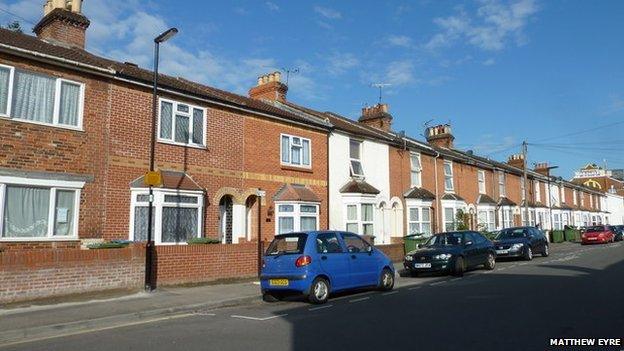
This photo of a terraced street is unremarkable and - arguably - dull. But it is among thousands of similar efforts uploaded by hundreds of volunteers dedicated to photographing every inch of the British Isles. What drives them?
Deserted housing estates, empty fields and road signs - the mundane sights that most of us ignore but which Matthew Eyre is eager to photograph.
He is one of a hardy band who spend their free time photographing every square mile of the British Isles for the website Geograph.
"A lot of it does look dull," he admits.
"To other people it maybe seems weird - why do we take pictures of letterboxes and things like that?
Mr Eyre, who is Geograph's second busiest member having uploaded nearly 110,000 pictures, has set himself a challenge of walking every street in Portsmouth - and he is not alone in laying claim to some big numbers.
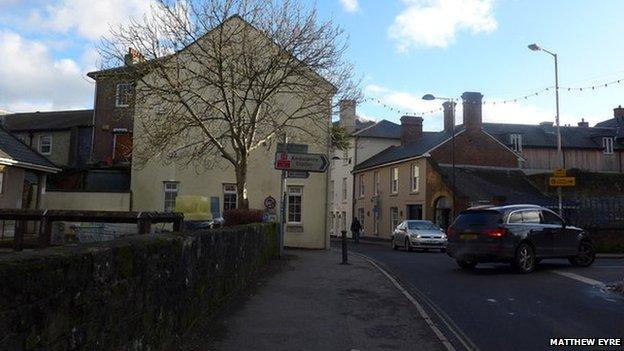
Matthew Eyre hopes his pictures will chronicle how the country changes in the coming years
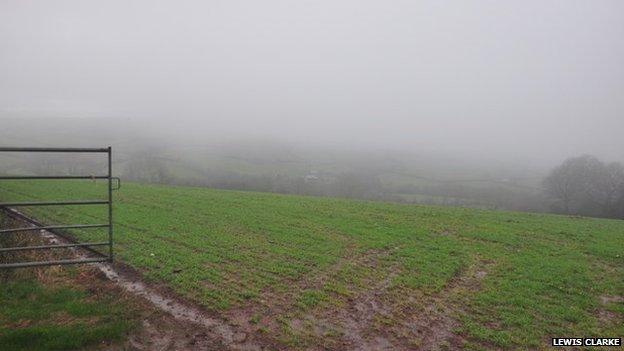
Lewis Clarke insists not all of the pictures are of grassy fields and empty streets
Lewis Clarke uploaded 9,982 pictures to Geograph last year.
"My mum says it's quite a sad hobby," he said. "It looks like just a collection of roads and grassy fields with sheep in them and things like that.
"But it's also a recording of our history and shows the landscape changing over time."
Mr Eyre agrees.
"There are historians for virtually everything," he says. "I think to be able to look back and say 'that's what that place was like in the 21st Century' is very important.
"The city of London, the historic buildings will be there for ever, but around them you could photograph the streets every five years and it would be different.
"Geograph is a site for dull photos but not for dull people."

Picture this
Geograph aims to collect, publish, organise and preserve images and information of every square kilometre of Great Britain, Ireland, and the Isle of Man
According to the website itself it is a geography, history and photography project. It is also a game, a community and "an excuse to get out more"
The game element comes from points. If you are the first to submit a Geograph for the a grid square you get a "First Geograph" point added to your profile
There are also second, third and fourth visitor points and "time-gap points" for users who photograph areas that have not been pictured for five years
Richard Webb is currently top of the Geograph leaderboard with 25,237 Geograph points from 82,754 images

What keeps bringing people like these back to Geograph is the desire to get more "squares" than anyone else. The aim is to collectively photograph every square kilometre of the British Isles.
Each user has their own personalised map showing where they've been along with all of the tantalisingly blank squares that have yet to be photographed.
Snap a picture of a never-before-photographed spot and you get Geograph points. Keep going and you might start to climb the leaderboards.
"When I've been travelling along the M5 and the M4 as a passenger I take pictures as I go along," explained Mr Clarke of his attempts to boost his numbers.
"Geograph is interesting. You hear things and you see things you otherwise wouldn't and without it I probably wouldn't go out as much as I do.
"I was out and about one day and the police searched my car because I was taking pictures in a badger cull area."
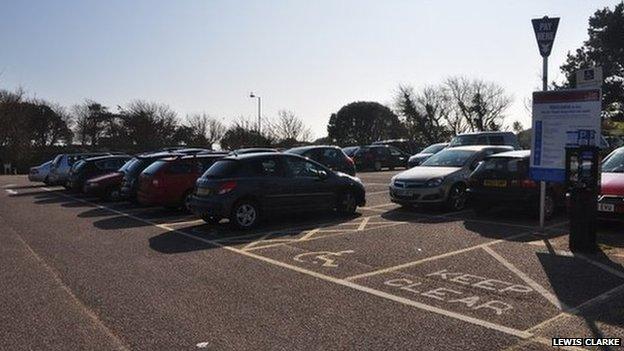
Geograph tasks its users with photographing geographical points on a map
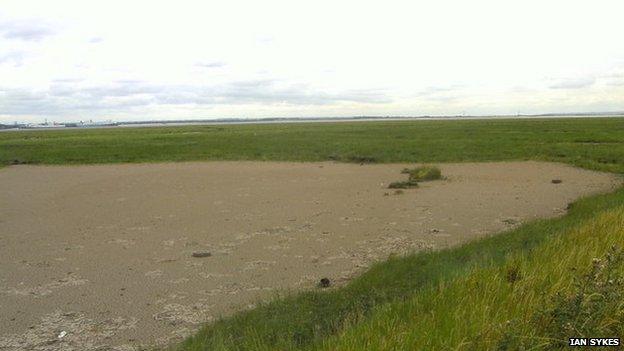
It asks its users to step off the beaten path in search of unphotographed squares
Geograph works under creative commons, which means anyone can reuse the pictures so long as they credit the photographer.
"I've had messages from Brazil and China," said Mr Clarke. "They want to use the pictures in their geography lessons and other people get in touch about local family history."
And yet a huge percentage of Geograph's photos must go unlooked at - the empty road junctions, vast expanses of grassy fields and car-filled streets.
Ian Sykes, from Hull, has seen a few of them. He is hoping to cover Yorkshire - all 12,000 sq km of it.
"I often take 500 a day and upload 100 of them," he said. "Digital cameras are great because you can take as many as you like.
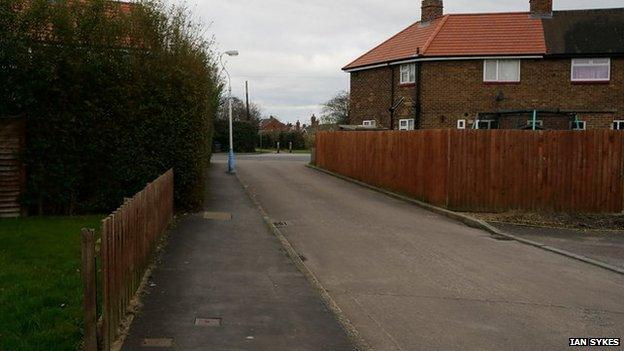
The vast majority of the site's pictures focus on empty city streets

Ian Sykes reckons Geograph's popularity is because Brits are "into funny things"
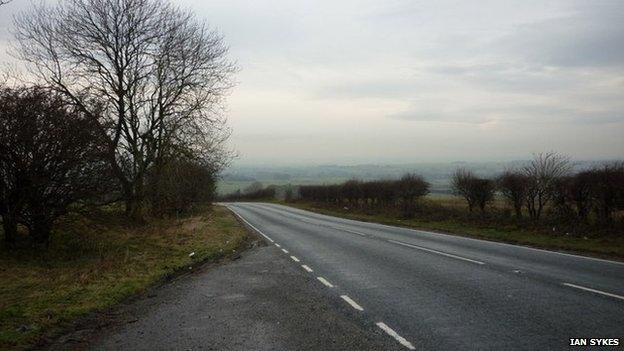
Mr Sykes is hoping to visit every square kilometre of Yorkshire
"I think my object now is to leave something after I go, after I die. I know that's a bit morbid.
"I've done a bit in Germany and Geograph has not taken off there like it has in the UK. It must be something to do with the British outlook; we must be into funny things."
Before Mr Sykes had heard of the website, he travelled the country taking photos of Sam Smith's pubs.
Did he get them all? "I think so," he said. "That's 300 I've done. It took me two years and I was looking for somewhere to put them and that was when I found Geograph."
Kenneth Allen, from Omagh in Northern Ireland, is rapidly closing in on his 100,000th upload.
"I just started small and then it sort of got a hold of me," he said. "You start giving yourself little targets."
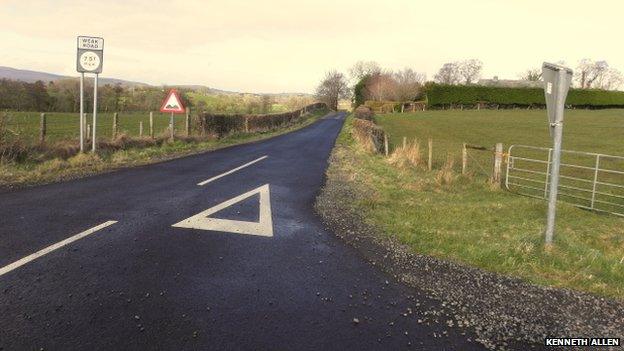
Like a lot of people on Geograph, Kenneth Allen got into the site through walking
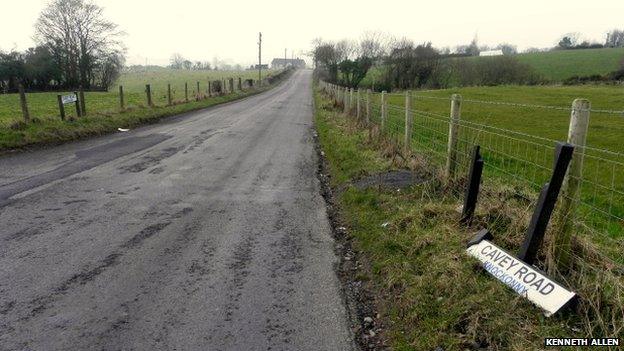
He uses the site as a means of discovering new places
Mr Allen has managed to nab more than 12,000 "first points" - squares that had not been photographed before - which is more than anyone else on Geograph.
"I'm working with the OS map and trying to fill in each grid square. I just like to go out and take a flask with me and see what I can find.
"With Geograph I've discovered more of the countryside than I ever did when I was walking."
Robin Stott, a director and trustee at Geograph, argues the website's picture are not boring at all.
"Mundaneness is in the eye of the beholder. Places such as housing estates, business parks, big arable fields might seem mundane but when you explore them and dig into the history, everywhere turns out to be interesting.
"The focus is always unfashionable geography but, as we enter our second decade, Geograph is developing as a historical record as well."
Users talk of Geograph as a means to discover new places and leave memories of what our streets and towns once looked like, rather than a place to show off great pictures.
As Mr Clarke puts it: "It's not exactly a photography site, it's a history project."
- Published31 March 2015
